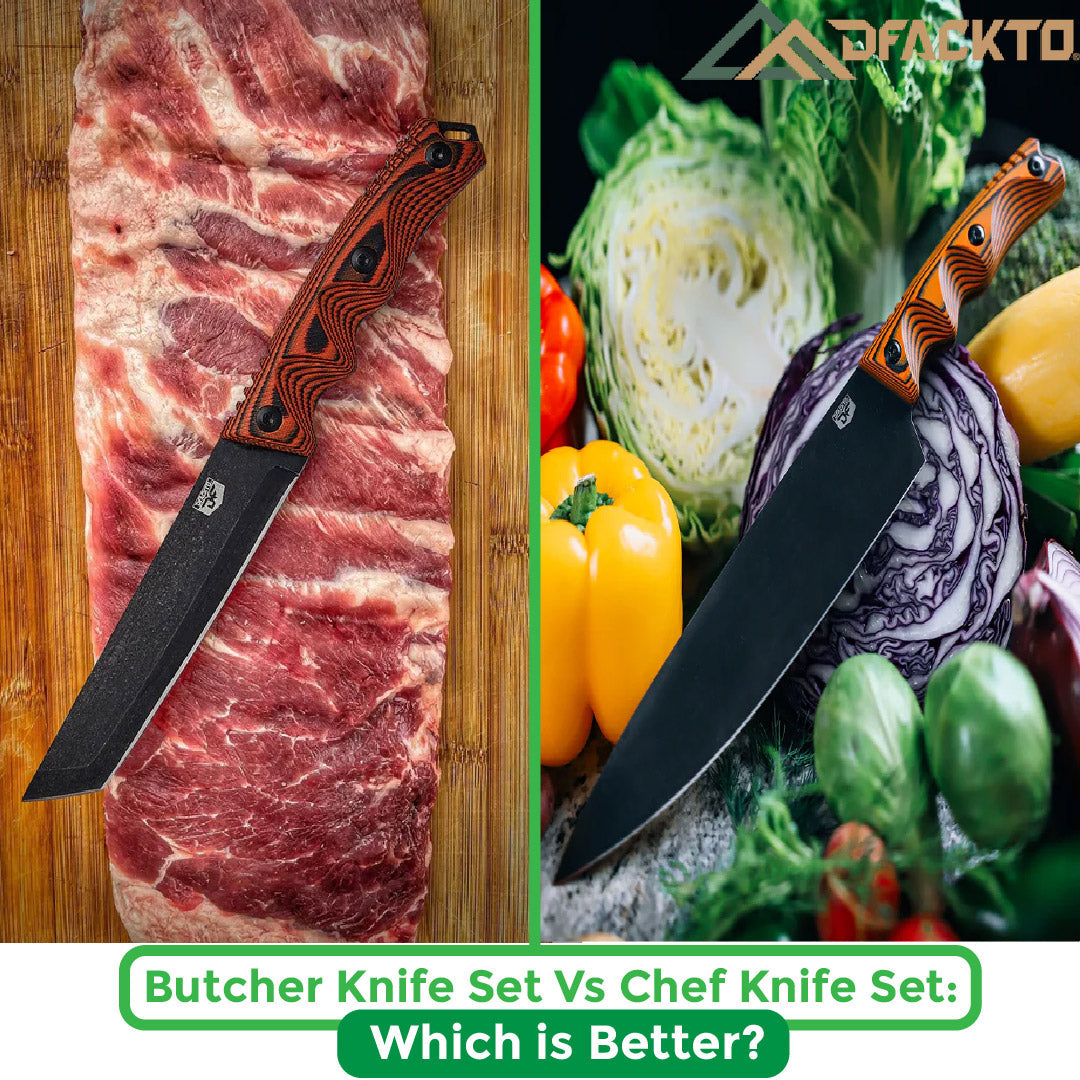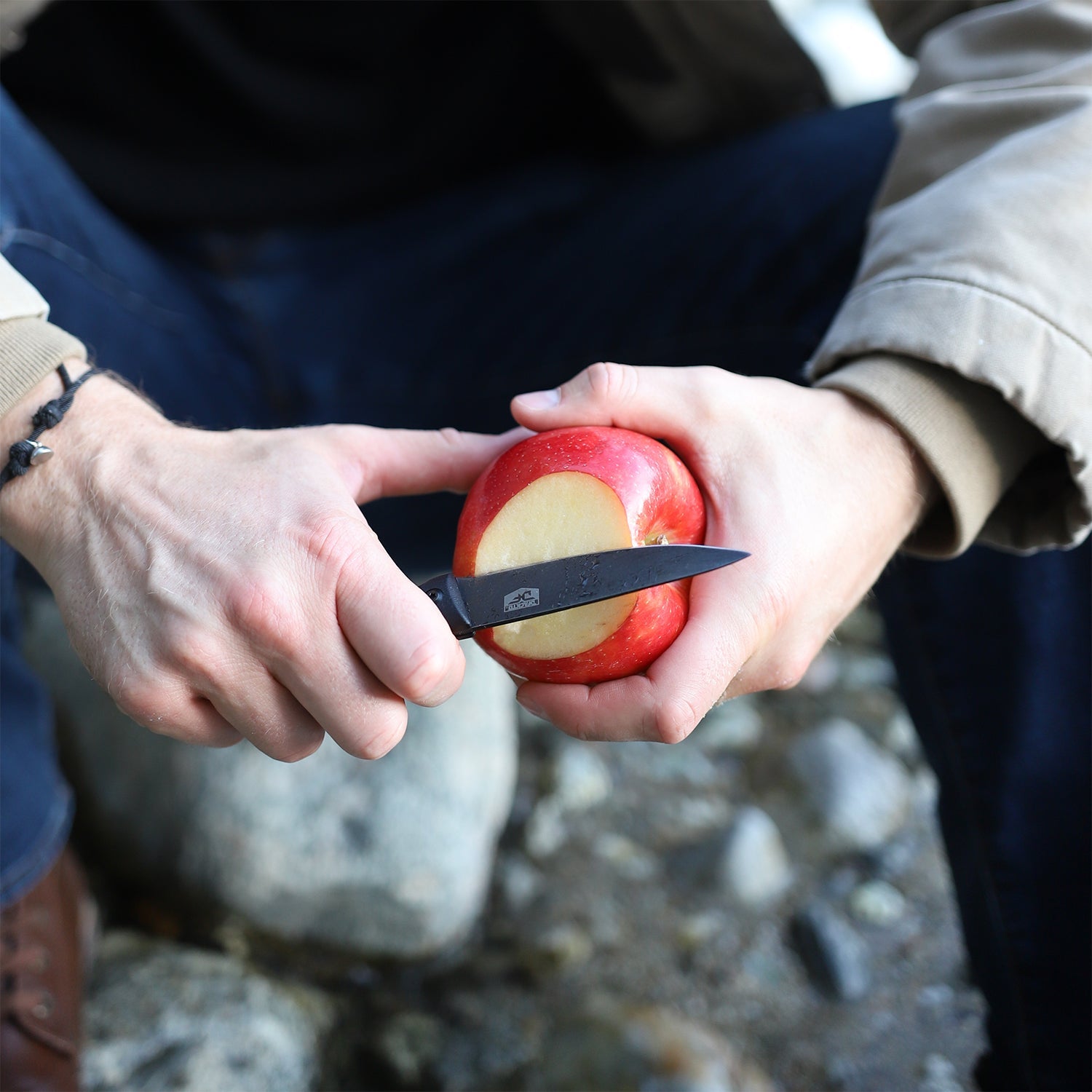In the world of outdoor cooking and rugged food prep, one knife has captured an enormous amount of attention in recent years: the so-called “Serbian Chef Knife.” It looks bold, hefty, and primal—the kind of blade that would seem right at home in a log cabin deep in the woods or by a roaring campfire. But just how effective is this knife for real-world outdoor use? What was it actually designed for, and is it really the right choice for your camp kitchen or backcountry adventures?
Let’s break it down with cold, hard facts—and separate hype from utility.
The Rise of the Serbian Chef Knife: How a Gimmick Became a Trend
The Serbian Chef Knife owes most of its fame not to professional chefs or survival experts, but to clever content creators. The knife first gained traction on the YouTube channel “Almazan Kitchen,” created by a where rustic outdoor cooking scenes were paired with slow-motion meat slicing and heavy wooden tables. The knife being used? Not even a true Serbian knife—it was actually a Chinese-style Chai Dao vegetable cleaver. But with aggressive marketing and vague backstory, it was rebranded as a “Serbian Chef Knife,” and the name stuck.
As for Almazan Kitchen, the pioneer of Serbian Chef Knives, they tout their unknown steel knives as being "Hand Forged By Master Blacksmiths In Serbian Wildfire". If this holds true, the unpredictability of a wildfires and ability maintain constant temperatures between 1600 and 2500 degrees Fahrenheit while staying mobile with specialized tools in hand sounds dramatic and captivating, the practical reality and immense danger makes it an unsuitable endeavor.
Social media did the rest. Instagram posts, Facebook ads, TikTok cooking shorts—everywhere you looked, someone was hacking into a steak or slicing fire-roasted veggies with this hulking blade. It looked cool, and that was enough for it to take off.
But once the flash fades, you’re left with an important question: Is it actually any good for real outdoor use?
The Problem with the Serbian Chef Knife in the Wild
Despite its rugged appearance, the Serbian Chef Knife is poorly suited for outdoor or bushcraft cooking. Here’s why:
1. It's Not a Cleaver—but It’s Treated Like One
Most people confuse the Serbian Chef Knife with a meat cleaver due to its squared-off blade and broad face. But it’s not built for chopping bone or heavy work. Unlike a cleaver, it doesn’t have the spine thickness or the metallurgical reinforcement necessary to withstand repeated blunt-force chopping. That means when it’s used to split bone, pry wood, or even break down thick cuts of meat, it’s far more likely to chip or crack.
2. It Has a Thin, Unreinforced Blade
For a knife that looks heavy-duty, it’s often made with a thin, poorly tempered blade that lacks the durability you’d want in an outdoor setting. The result? A knife that flexes or breaks when under pressure, especially when used improperly (which is often, due to its misleading appearance).
3. Low-Quality Steel Is Common
Most of the Serbian-style knives flooding the market today are made by fly-by-night manufacturers who don’t even disclose the type of steel they use. If the company can’t tell you what the blade is made of—run. You’re probably buying a knife crafted from cheap, low-carbon stainless or mystery metals that won’t hold an edge, will rust easily, and can fail at the worst possible time.
4. It's a Gimmick, Not a Workhorse
Ultimately, the Serbian Chef Knife is a marketing gimmick, not a precision tool. It’s designed to look good on camera, not to perform well in the field. It’s the culinary equivalent of a mall ninja sword—more about aesthetics than function. If you’re serious about outdoor cooking, you’ll want something engineered for performance, not likes and follows.
So What Is the Serbian Chef Knife Actually Meant For?
To give the knife its due, there are a few appropriate uses:
- Soft vegetable chopping – inherited from its Chai Dao roots
- Basic slicing and dicing on a clean prep surface
That’s where the list ends. The second you introduce bone, tough fibers, hard root vegetables, or bushcraft tasks like batoning or carving—you’re asking for failure.
What You Should Be Using Instead
If you’re prepping wild game, breaking down meat, or cooking outdoors where reliability is key, the last thing you want is a flashy knife that fails under pressure. You need something that offers:
- Durable, quality steel
- Multi-use performance
- Comfortable grip in wet or dry conditions
- Field-ready ergonomics for safety and fatigue reduction
One excellent option is the DFACKTO Interceptor 6.5" Santoku Knife.
Why the DFACKTO Interceptor 6.5" Santoku Outperforms the Gimmicks

Designed for Field Utility
Unlike the Serbian Chef Knife, the DFACKTO Interceptor Santoku was designed with real-world outdoor applications in mind. It’s a true tactical culinary knife—purpose-built for chefs, hunters, outdoorsmen, and those in the field who need gear that performs without compromise.
Built with Superior Materials
This blade features high-carbon steel that is heat-treated for long-lasting edge retention, corrosion resistance, and durability under pressure. It won’t fail mid-task, whether you're breaking down a quartered deer or slicing onions at the campsite.
Ergonomic, Slip-Resistant Grip
The handle includes DFACKTO’s proprietary finger-hold design, offering unmatched grip and comfort, even in wet conditions. It’s ideal for reducing fatigue and improving control during repetitive tasks—something a wide, flat-handled Serbian knife just can’t provide.
True Santoku Versatility
The Santoku design lends itself to multi-purpose outdoor cooking—from vegetables to meat prep to precision slicing. Unlike the Serbian knife, it’s balanced, maneuverable, and won’t wear you down after a day in the field.
Red Flags to Watch for When Buying Outdoor Culinary Knives
If you’re shopping for a knife that can stand up to the rigors of real outdoor cooking, here are a few things to watch out for:
- No steel type listed – If it just says “stainless steel,” don’t buy it
- Overly dramatic names and packaging – It’s a tool, not a prop
- Heavy emphasis on looks vs. specs – You need form and function
- No warranty or return policy – Companies that don’t stand by their blades don’t expect them to last
Final Verdict: Leave the Serbian Chef Knife for Instagram
The Serbian Chef Knife might make for a good photo op, but when it comes to real-world outdoor cooking, it’s a poor substitute for a well-made tactical culinary knife. Its origins are rooted in style—not substance—and its performance (or lack thereof) reflects that.
For the outdoorsman, survivalist, or mobile chef who demands tools that perform as hard as they do, a gimmicky knife just won’t cut it. You need something built to thrive in harsh conditions, to take abuse, and to do the job right—every time.
Looking to Upgrade?
If you’re done messing around with novelty blades and want a real performer, the DFACKTO Interceptor 6.5" Santoku is your go-to.
Tactical. Durable. Field-Proven.
And unlike the Serbian chef knife—it’s built for more than just show.



